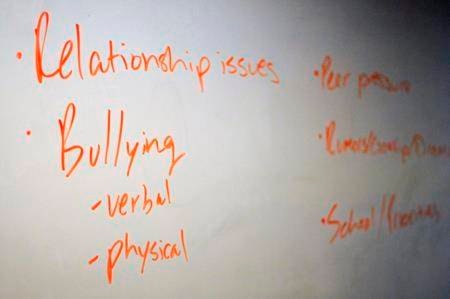Children’s advocates from across the country are urging the federal government to create a national strategy to deal with what they are calling a youth suicide crisis.
“I’ve sat with parents and family members overwhelmed with the grief of losing their child to suicide. And I keep thinking it doesn’t have to be this way,” said Del Graff, president of the Canadian Council of Child and Youth Advocates.
“We have to find ways to stop this and it’s time to take action.”
The council, which includes members from nearly every province and territory, released a research paper on youth suicide during a national meeting in Winnipeg on Tuesday.
Graff, who is also Alberta’s child and youth advocate, said suicide is the second most common cause of death for young people and the rates are highest among Indigenous children and youth. However, Canada is the only G7 country without a national plan.
He encouraged all political party leaders during the ongoing federal election campaign to outline how they would tackle youth suicide.
“As Canadians we ought to be able to demand more,” he said.
Advocates from across the country have individually been looking into alarming suicide rates in their regions, Graff said. The latest report brings together that research in a national overview.
It says childhood trauma and experience with the child-welfare system play a role. Many youths feel they were not being heard.
“Until Canada takes concrete action on the moral and economic imperative of investing in children through a national suicide strategy, our children will continue to die while waiting,” the report says.
It is difficult to understand just how many children and youth are affected across the country, the report says, because of under-reporting and inconsistencies in how different areas collect information. Between 2013 and 2017, at least 1,174 youth between eight and 19 years old killed themselves.
ALSO READ: Coroner reports decrease in suicide rates across B.C.
ALSO READ: Better suicide prevention needed for B.C. youth, group says
The council wants Ottawa to make reporting of suicides and attempted suicides mandatory and to develop cross-jurisdictional data collection.
The advocates also say the federal government must engage with First Nations, Metis and Inuit communities, which have higher suicide rates.
Lisa Broda, Saskatchewan’s deputy children’s advocate, said that in her province Indigenous girls were 29 times more likely to commit suicide than their non-Indigenous counterparts and Indigenous boys were six times more likely.
Six young girls between the ages of 10 and 14 took their lives in Northern Saskatchewan in one month in 2016.
One Manitoba First Nation recently called a state of emergency after four deaths and 22 attempts in the summer.
Manitoba Advocate for Children and Youth Daphne Penrose said the numbers of youth taking their lives is shocking.
Children in this country should have a right to quality mental health services when they need them, but that’s not always the case, Penrose added. She called the results “catastrophic.”
“We need to turn rights into realities for children, because our children deserve them. We have a responsibility to raise children and to provide them what they need.”
Kelly Geraldine Malone, The Canadian Press
